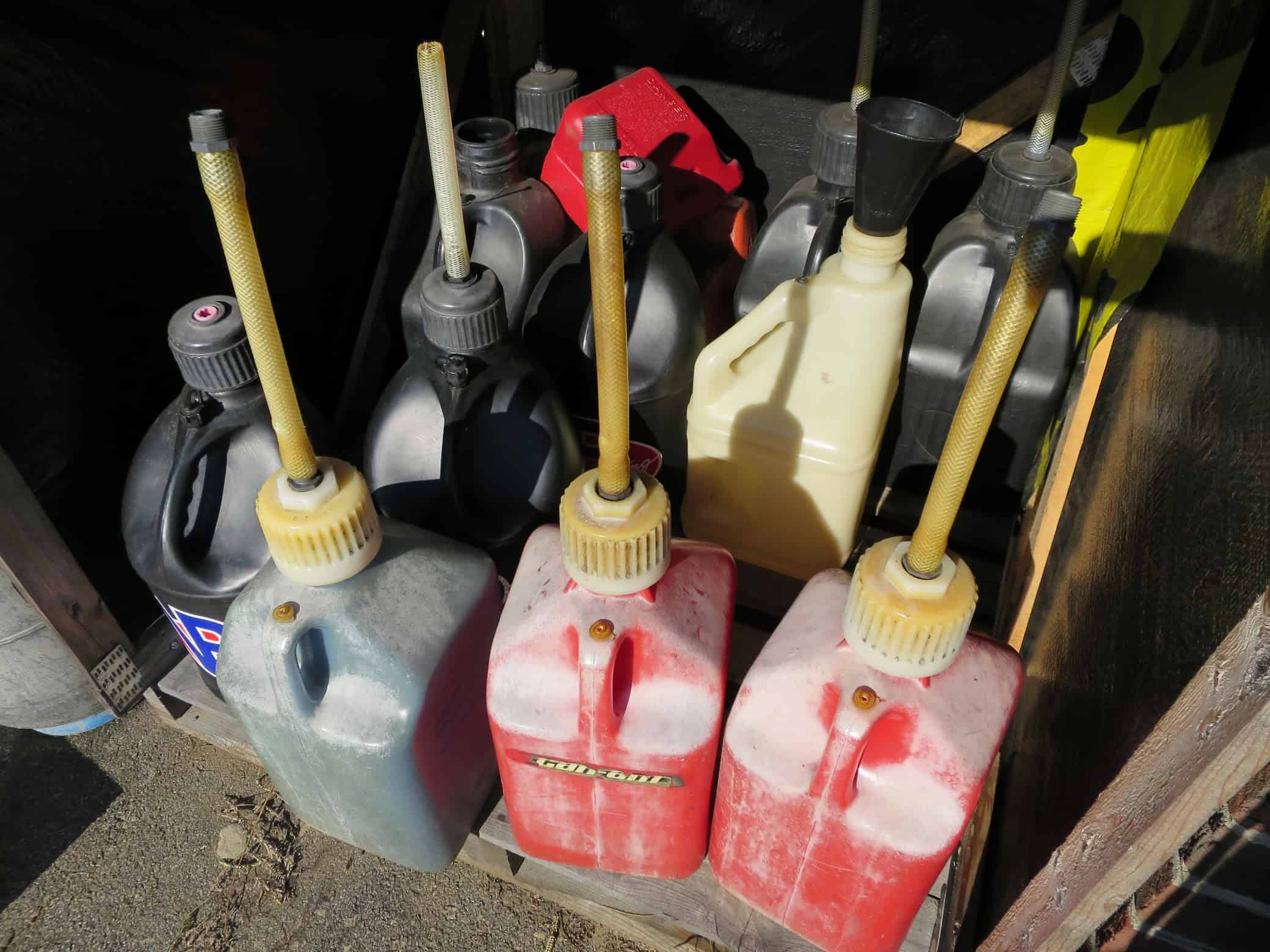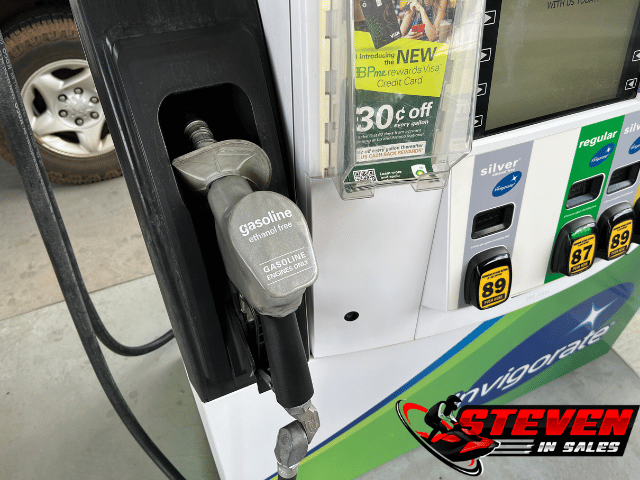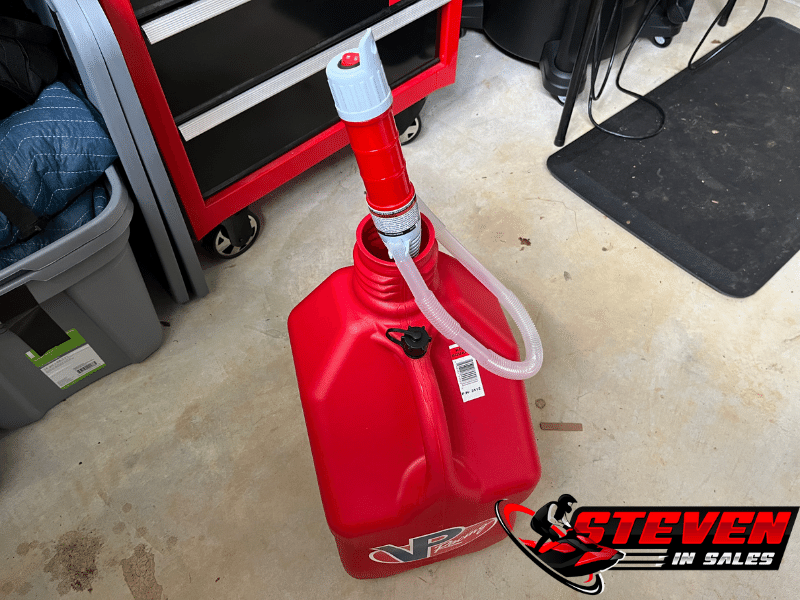All jet skis run on gas, but if you have a non-supercharged (under 200HP), you can run regular (87 octane).
If your jet ski is supercharged, I suggest you run premium (93 octane).
If you’re in doubt, there is usually a sticker next to the gas-cap to let you know what octane the manufacturer suggests. If the sticker is missing or not clear, then run premium.
Do jet skis need special gasoline? Jet skis do not require any special fuel; they use the same gasoline as your car. However, supercharged jet skis need higher octane (premium) gasoline, which is also available at gas stations.
Ethanol Or Non-Ethanol?
I suggest you avoid running ethanol in your watercraft if you can, but under 10% is fine for modern 4-stroke jet skis.
It’s getting harder to get gas that doesn’t have ethanol in it, so it’s fine so long as it’s under 10%.
You can get Marine Ethanol Treatment (Amazon Link Ad) if all you can get is ethanol gas, it will help, and I say a must for supercharged engines.
Filling Up At Gas Stations
Filling at the gas station is one of the best ways to get gas for your machine.
You will need a trailer and a truck to get it to the gas station, but it’s the cheapest and easiest way to fill up.
You can get gas on the water, but it’s always more expensive. Not every waterway has gas pumps for boats, so your local car gas station may be your only option.
Gas Cans
Another option for refueling besides taking them to the local gas station or lake gas pumps is to use gas cans.
You fill up the gas cans at the gas station following proper procedures at the gas stations and then take it back to your jet ski.
Gas cans often come in 5 gallon containers and jet skis can hold 8 to 18 gallons of gas, so I recommend getting multiple gas cans. There are several gas can options, and I cover the best gas cans for jet skis here.
Costs To Fill Up
It can cost anywhere from $30 to $150 to fill up the jet ski fuel tank that is empty, depending on the jet ski and the cost of gas.
The Sea-Doo Spark has an 8 gallon gas tank, and if gas is $4 a gallon, it would cost $32 to fill it up.
Most jet skis have an 18 gallon gas tank, and if gas is $4 a gallon, it would cost about $72 to fill up.
How far will a tank of gas get you? I cover that here.
If you’re wondering about the other costs that come with owning, I cover that here.
Vent After Adding Fuel
It’s common for a boat owner to turn on the blower to vent fuel vapors out after refueling their boat, jet ski owners should do the same.
But jet skis don’t have a blower, so how do you air it out? To vent, I like to take the seats off and let it air out for a few minutes. Some like the Sea-Doo Spark and EX don’t have access to the engine compartment from the seats, so you need to open an access port to air it out. Your owner’s manual will tell you what to open to vent your jet ski after refueling.
You must vent your machine after refueling, as some vapor can escape the hoses and tank and hang around the engine compartment. With the right spark, it can ignite and blow your jet ski or boat!
Marina
If you keep your jet ski at a marina, they will often have a place to get gas for your jet ski, and some may even refuel it for you when asked.
You do pay more for gas on the water, on top of the marina fees, but it’s worth it for some as it takes away a lot of the pains of owning jet skis.
Not every marina will sell gas to you if you’re not a member or know the right people. A gas can, or a local gas station, is the only option for many.
The Easy Way
5 gallon fuel cans are heavy, and if you’re hunched over refueling on the water, it’s a pain to do.
One solution I like to use is a fuel transfer pump (Amazon Link Ad). With a lot of these fuel cans being a pain to use, the fuel transfer pump makes it so easy, and I find I make less of a mess.
You can buy large gas cans that have wheels (Amazon Link Ad), which is great for refueling with the PWC in the water and the can up higher. The problem is getting the large gas can to the gas station and then back home, it’s heavy and unless you have a trailer with a gate you can’t lift it by yourself.
I tend to stick to the smaller 5-gallon gas cans and use a metal cart (Amazon Link Ad) to roll them to the dock. I avoid plastic carts due to the fear of static electricity near gas cans.


